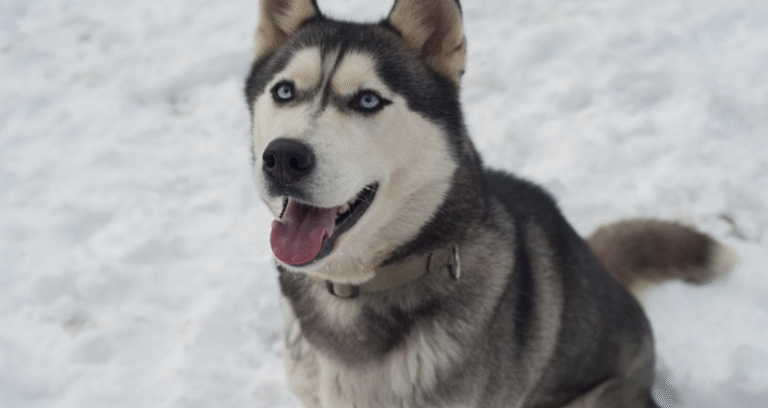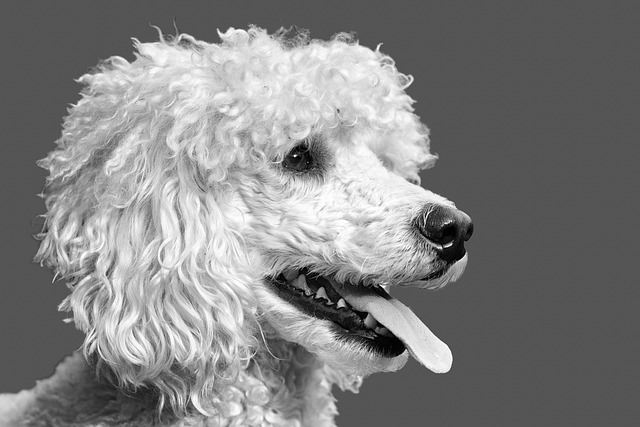Frenchie mix with Poodle, also known as French Boodle or Frenchie Doodle, is a cross between a French Bulldog and Poodle. Famous for its petite stature, velvety curls or waves, and warm expression, this blend usually measures 7–14 kg and 28–38 cm in height. Most get the low-shed coats, however grooming requirements differ by curl type. Energy level is moderate, with short play bursts and steady walks.
Typical health notes are breathing care for shorter muzzles, skin folds and joint checks, but Poodle lines can introduce eye or thyroid risks as well. Training is easy with brief, concise lessons and measured praise. To plan care, cost and day-to-day, the sections below parse characteristics, requirements and advice.
Hybrid Profile

The French Bulldog–Poodle mix, also known as the French Boodle or Frenchie Doodle, is a delightful dog that merges the Frenchie’s charming personality with the intelligence of a standard poodle. Owners value their loyalty and affectionate temperament, making them great dogs for families. Each individual pup can exhibit a variety of traits, drawing from both parent breeds for a truly unique companion.
1. Appearance
For the most part, they exhibit a strong, Frenchie-like body, bat ears, and a shorter muzzle, softened by the longer limbs and slender lines of the Poodle. The coats of these adorable doodle hybrids can vary from tight curls to loose waves or straight, and they may lightly shed or produce animal dander. If they have curlier fur, they may require daily brushing. Colors include a variety of shades such as white, gray, black, tan, brown, and more. Merle patterns can appear in some lines of the Frenchie doodle.
Facial structure might bias brachycephalic such as the Frenchie or light Poodle and longer-nosed. This impacts breathing ease, heat tolerance and even snoring. Size shifts with the Poodle parent: Toy and Miniature usually yield 6–12 kg, 25–38 cm at the shoulder. Standard crosses may go higher, with wider chests and more leg.
For easy reference, consider creating a basic chart detailing head shape, ear set, coat type, shedding, height, and weight for the Frenchie, Poodle (Toy/Mini/Standard), and the mix, noting where results may vary.
2. Temperament
Frenchie Doodles are loving, loyal, social, and slightly needy. Many bond quick and stay close.
Given early social time, they are great with kids and other dogs and cats. Their feisty, fun-loving streak makes for energetic living spaces, but long days solo can stir up tension. Anticipate separation sensitivity and incrementally construct solo time.
3. Intelligence
Poodle genes boost trainability, so they pick up cues, tricks, and house rules with consistent, positive training. Employ small sessions, high-value treats and obvious markers.
Deep work matters Cycle puzzle feeders, odor games, and hide-n-seek. Smart dogs get bored and boredom invites mischief, like counter surfing or door dashing.
4. Affection
While most Frenchie Poos, a delightful hybrid designer breed, yearn for contact and will follow their owners from room to room, they excel when included in activities. Their soothing, people-centric mode is perfect for companionship or empathy positions, nurtured by tender care and tons of compliments.
5. Energy
Moderate energy suits city living. Target 45–60 mins divided between brisk walks, fetch or tug, as well as two brief brain games. Toy/Mini moms usually signify quick, energetic dashes. Normal lines can supplement endurance. Watch heat if the muzzle is short, and they have modest appetites.
Sample day: 20-minute morning walk; noon puzzle; 15-minute play; evening 25-minute walk; five-minute trick practice. Practice screening for ocular and respiratory hazards, particularly in brachy mixes.
Size Variations

Frenchie X Poodle Doodles, also known as Frenchie Doodles, can come in different sizes depending on whether the Poodle was a Toy, Miniature, or Standard. Most mature Frenchie Doodles hover about 12–15 inches at the shoulder and weigh between 7–13 kg. Smaller crosses tend to be great dogs for tight spaces, while larger ones thrive with room to move.
Toy Poodle Influence
Crossing a French Bulldog with a Toy Poodle results in a petite, much lighter dog, typically below 7 kg and can be as low as 4.5 kg. Height can arrive around 25–33 cm, with a tiny body that’s convenient to just grab and go.
These little guys are perfect for studio flats, urban apartments and jet-setting lifestyles. Short lifts, light carriers and limited stair use – all keep them safe.
Toy influence will provide more Poodle-like, lower-shed coats, which can assist allergy-prone households. That said, coat type varies: some keep a shorter Frenchie-style coat, others a wavy, denser one.
Be on the lookout for toy-breed issues like dental crowding, patella problems and hypoglycemic episodes in young pups. If the Frenchie face wins, keep an eye on breathing and heat stress.
Miniature Poodle Influence
Miniature Poodle mixes tend to fall in the small-to-medium category with a proportionate frame. Anticipate approximately 7–thirteen kg and twenty eight-thirty eight centimeters tall, providing extra sturdiness than toy mixes without veering giant.
They work perfectly in an apartment or a house with a small yard. Daily walks and short play bursts satisfy needs for most families.
Miniature genes tend to contribute agility and bouncy energy. You experience snappier turns, more intense training focus and a dog who LOVES quick games and puzzle feeders.
| Trait | Toy Influence | Miniature Influence |
|---|---|---|
| Typical weight | 4.5–7 kg | 7–13 kg |
| height | 25–33cm | 28–38cm | | Space requirements | Minimal | Low to moderate | | Energy | Low to moderate | Moderate |
Full Grown Expectations
Most adult measure 30–38 cm and weigh 7–13 kg, depending which Poodle size we’re talking about. Frenchies are 7–13 kg. Poodles are roughly 9–32 kg, so the pups are all over. Standard-influenced crosses can reach 18–27 kg and 38–51 cm, while Toy Froodles can be 4.5–9 kg. Coat size and density vary, some receive a Frenchie head shape that impacts look and breathing.
- Growth check at 8, 16, 24, 36, and 52 weeks
- Shift from three to two meals by 6 months
- Refit harness every 4–6 weeks during growth
- Vet weigh-ins each quarter in year one
- Step up for bigger bodies. Keep sessions short for smaller or brachyocephalic builds.
Most attain full physical growth by 12–18 months. Parent size is a good guide, but with mixed genetics exact adult size is difficult to gauge.
Health Outlook

Frenchie mixes with Poodle, also known as Frenchie Doodles, occupy a middle space in the designer breed category. Hybrid vigor may help stabilize the risks associated with purebreds, but the outcome largely depends on which traits each of the pups inherited from their parent breeds. Factors like face shape, body size, and coat type all influence health outlook, which links back to breeding decisions and everyday care for these adorable doodles.
French Bulldog characteristics can increase risk for breathing and eye problems. If the mix maintains a short snout and narrow nostrils, signs can include noisy breathing, heat stress, and poor exercise tolerance, particularly in warm or humid conditions. Brachycephalic airway syndrome might need weight control, harnesses instead of collars, cool rest areas and sometimes surgical fixes.
Bulging eyes can be susceptible to corneal ulcers and dry eye – so look out for squinting, discharge, or redness. Tail pocket infections may flare if a deep tail crease traps moisture — clean and dry the area during baths. Light or thin coats increase sunburn risk – provide shade, apply dog-safe sunscreen to exposed skin and avoid peak sun. These problems are more prevalent when the Frenchie face is in charge.
Poodle lines introduce additional complexities. Certain mixes, including the fluffy French bulldog variety, are prone to dental crowding, tartar build-up, and gum disease. Daily brushing, dental chews, and professional cleanings are important for maintaining oral health. Obesity is another risk when activity levels are low and treats are high, so it’s advisable to use portioned meals and healthy snacks, alongside consistent exercise. Some Poodles are known to carry genes for eye diseases and autoimmune disorders, making baseline eye exams and periodic screenings prudent. Requesting DNA testing results and certifications on both the sire and dam from reputable breeders is highly recommended.
Regular, preventive care is what makes the greatest difference. Keep up with core and regional vaccines. Employ year-round parasite prevention for fleas, ticks and worms. Schedule vet visits every six to 12 months to monitor weight, teeth, joints, skin, and breathing. Grooming matters beyond looks: regular brushing prevents mats, keeps the skin clean, and lowers hot spot risk. Check ears, skin folds, and nails each week. For calm walks train, and hard exercise in heat restrict. Rest after play give. With good breeding, proper nutrition, and consistent veterinary care, a lot of Frenchie-Poodle mixes live 10–15 years and remain robust.
Daily Care

A consistent, reliable routine is essential for keeping Frenchie Doodles healthy and calm. Prioritize coat care, nutrition, exercise, and socialization for these adorable doodles. Monitor weight, body shape, coat texture, and energy weekly to ensure your fluffy French Bulldog is thriving.
- Grooming: Brush, bathe, trim nails, clean ears, and brush teeth on set days.
- Feeding: Measure meals, note stool quality, and keep water fresh.
- Exercise: Aim for 45 minutes of walks per day, plus play.
- Social: Short training sessions, new sights, and safe dog meets.
- Health: Weigh monthly, note itch, redness, or limping, and book checks.
Grooming
Grooming requirements for the adorable Frenchie Doodle depend on coat type. Curly, Poodle-like coats mat quickly and require daily attention, while flatter coats can tolerate brushing every 2–3 days. To prevent clumps and tangles, you should brush daily all the way to the skin. If the Froodle has a Poodle-influenced coat, then it will require a good brushing every day.
Plan regular sessions: quick daily brush, bath every 4–6 weeks with mild shampoo, nails every 2 months, ears checked weekly, teeth brushed three times a week to daily. Keep tools ready: slicker brush, metal comb, nail grinder, ear cleaner, and a soft toothbrush.
For matted or curly coats, schedule a groomer every 6–10 weeks for clip-downs, sanitary trim, and coat shaping. This routine reduces mat risk and skin flare-ups, ensuring your fluffy French Bulldog remains happy and healthy.
Exercise
Provide daily moderate exercise: two or three short walks, fetch, tug, and puzzle play. Interactive toys will help keep the Froodle’s mind active and slash anxiety when home alone.
Pace yourself to prevent heat stress, because Frenchie characteristics can stifle ventilation. Stroll during cool hours, stay hydrated and ditch the hot weather sprints. For mini poodle mixes, include agility games, nose work or short rally drills a few times per week.
Time, pace, rest – track them. Change with age, health, and energy. Try for 45 minutes of walks a day as a minimum.
Diet
- Select a balanced, premium nutrition tailored to size, age and activity.
- Practice portion control to avoid obesity. Divide it into two or three meals.
- Track weight, waist tuck, & stool – tweak grams, not guesses.
- Fresh water should be accessible at all times, 24/7.
- Employ tiny, nutritious snacks as training ) count them in the daily sum.
Maintain socialization and training for life, especially with adorable doodle breeds, where the first year counts.
Training Approach

Frenchie mix Poodles, aka Froodles, combine a sharp smarts with a stubborn streak. Training works best when it establishes clear rules, keeps sessions fun, and rewards effort.
Begin early with a basic strategy. Train name recognition, sit, down, stay, and come in quiet rooms initially, then introduce mild distractions. Employ soft treats, gentle praise, and a marker word such as “yes” to pinpoint the desired behavior. Housebreaking needs a set schedule: outside after sleep, meals, and play; same door, same spot; 5–10 minutes to try; then back inside with supervision. Crate train with short, positive steps and leave one small chew or food puzzle in the crate so it feels safe. Anticipate some weeks of soul-work. They water too and count them when you take them out after a drink. If there’s an incident, clean with enzyme cleaner and move on without punishment.
Make sessions brief and enjoyable. Two to four mini-sessions per day, 5–8 minutes each, works well. Stir one new skill into one easy win confidence boost. Employ a variable reward schedule once a behavior is stable so the dog continues attempting. Finish on a high note and quit before your dog tunes out. If interest wanes, shift to a nose game, such as “discover,” and resume training down the road.
Be strong but gentle. Harsh discipline or loud corrections can shut a Froodle down or ignite pushback. They react most favorably to routine, encouragement, and small, squishy snacks. If a cue is missed, drop the bar, assist them to score and applaud the attempt. Froodles are intelligent but they can be stubborn, so persistent reiteration counts.
Mind health needs as you train. If your dog exhibits French Bulldog tendencies, steer clear of the heat. Workout during the cooler parts of the day, hydrate frequently, and be aware for signs of heat exhaustion. Keep high-energy drills short and substitute in brain work—shaping, touch targets or scent games—to minimize strain, while still tiring the mind.
Put in place some organization with puppy classes or a well defined weekly schedule. A good class develops social skills and proprietor timing. For socialization, go slow: new people, calm dogs, varied surfaces, traffic sounds, and short car rides, all paired with treats. Target numerous short, healthy doses – not prolonged, stressful ones.
The Ethical Question

Ethics lies in the middle of any decision to introduce a Frenchie Doodle into a household. It’s not just about the dog’s appearance or temperament; it’s equally important to consider who breeds it, how they breed, and the lasting health implications for the dog. The controversy surrounding designer breeds is nothing new. A historian and vet noted that discussions on breed health in the 19th century resonate with today’s concerns. While we’ve been breeding working dogs—such as herding, hunting, and guarding breeds—for centuries, something shifted during the Victorian period. The emphasis on aesthetics and novelty won out, a trend that continues to shape our conversations about French bulldogs and their mixes today.
When looking for a breeder, prioritize those who emphasize health and welfare. This means seeking explicit, documented evidence of health screenings for both parent breeds. For a French bulldog parent, ensure there are screenings for airway function, spine, hips, patella, and eyes. If you’re considering a standard poodle parent, ask for DNA tests for PRA, hip and elbow scores, and thyroid screenings. Always demand veterinary records rather than just verbal claims.
Evaluate the environment where the dogs are raised; pure, open-air rooms, regular social interaction, and no signs of overcrowding should be the standard. Inquire about the number of litters per year, how often a dam is bred, and how puppies are socialized—from day three handling to exposure to various sounds and surfaces. Ethical breeders will encourage you to visit, let you meet the dam, and discuss temperament rather than just colors or coat types.
Avoid puppy mills, backyard breeders, and large commercial operations that sell through third-party sites or ship without proper screening. Red flags include no in-person visits, cash-only transactions, a lack of questions for you, and no lifetime take-back policy. Many mills promote ‘rare colors’ or ‘teacup’ sizes, both of which often come with increased health risks and no supporting statistics.
Adoption is a valid alternative worth considering. French Bulldog rescues, poodle networks, and mutt shelters frequently have Frenchie mixes available. Adopting helps improve welfare throughout the system and reduces demand for high-risk breeding practices. It also provides transparency regarding existing health issues. Keep in mind that Frenchies are susceptible to ear infections, skin fold dermatitis, and labor complications due to their body shape. Activists argue that long-term inbreeding and exaggerated forms result in pain for these animals and have called for prohibitions in certain countries.
The same ‘cuteness factor’ that drives demand for brachycephalic breeds often overlooks the dogs’ welfare. The Labradoodle started as a hypoallergenic guide dog concept, but now countless mixes prioritize fashion over function. The core question remains: do we value looks and trends more than the quality of life for our pets?
Final Words on Frenchie Mix with Poodle
A frenchie mix with poodle injects charm, brains and a zen attitude. A lot thrive in tiny houses. Short walks agree with most. Play keeps the mind limber. Simple rules assist. Age and size tailored food supports weight and joints. Vet catches ear, skin or knee problems early.
To decide wisely, see the pup and the parents. Request health screenings. Enter a groomer who understands curls and folds. Schedule a budget for vet care, food and gear. Make time for brief training every day. Think ten years, not ten weeks.
For next steps, talk to a vet or a trainer. Go to a rescue or reputable breeder. Jot down a mini wish list. Begin one little tweak today.
Frequently Asked Questions
What is a Frenchie Poodle mix called, and what is its typical profile?
Frequently referred to as a French Boodle or Frenchie Doodle, this adorable breed combines the French Bulldog and Poodle. Look for a small, muscular dog with curly or wavy fur, typical of the Frenchie Doodle’s hypoallergenic coat. Their loving, outgoing temperament makes them great dogs for apartments, provided their exercise needs are met.
How big does a Frenchie Poodle mix get?
Most weigh 7–14 kg and stand 28–38 cm at the shoulder, depending on the Poodle size incorporated (Toy, Miniature, or small Standard). The most prevalent are the Minis, which belong to the adorable breed known as the Frenchie Doodle. Their stocky bone structure makes them weigh more than they appear.
Are French Boodles generally healthy?
They CAN be healthy with educated breeding, especially in designer breeds like the Frenchie doodle. Potential risks encompass brachycephalic airway syndrome, allergies, and eye disease. Routine vet visits and weight management assist in ensuring these adorable doodles stay healthy.
How much grooming does this mix need?
Grooming requirements for dogs, especially for breeds like the adorable Frenchie doodle, are coat-specific. Wavy or curly coats, such as those found in poodle crosses, need brushes 3–4 times per week and salon trims every 6–10 weeks.
What daily care keeps them thriving?
Give 2 quick walks (20–30 minutes each) and some quick playtime, perhaps using puzzle feeders for brain work. Provide a nutritionally balanced diet appropriate for age and activity, especially for energetic dogs like the adorable doodle. Cool them off in the heat and ensure you prioritize dental care and general check-ups for their health.
Are they easy to train?
Yeah, with consistency! They’re people-centric and food-driven. Employ brief, upbeat periods. Begin socialization early. Look out for those Frenchie stubborn streaks. Build calmness and leash manners from day one.
Is it ethical to breed this mix?
Ethics revolve around health-first breeding, especially for designer breeds like the frenchie doodle. Select breeders who outcross sensibly, screen all parent breeds for airway and orthopedic problems, and steer clear of exaggerated characteristics. Think adoption; always meet the parents, review health records, and prioritize welfare over fashion.






